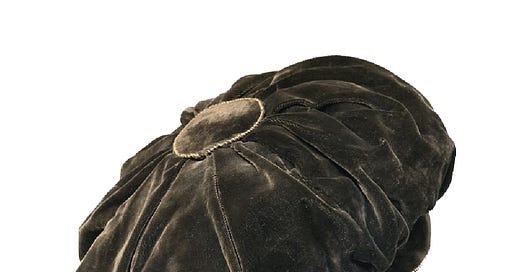Hegelʼs cap, preserved in the philosopherʼs childhood home in Stuttgart, inside a windowed shrine, like a relic, like his brain itself, is, more precisely, a sort of toque, a toque of black velvet that appears in good condition, barely greening after nearly two centuries, though of course weʼd have to be able to turn it over to examine the other side, the inside, eroded or singed, perhaps, by the overheated cogitation of the author of Phenomenology of Spirit, pot-roasted by the incessant ebullition of his intellect, or at least greasy from his hair; a toque that has, at its center, or its summit, like a pom-pom—though given the grave questions of morality and law debated beneath it, said pom- pom would have been entirely inappropriate—a second patch, round in shape, and brighter, barely yellowing for its part after almost two centuries, made from the same very fine, very soft velvet, and stitched with golden thread.
Itʼs something to be seen.
Keep reading with a 7-day free trial
Subscribe to Book Post to keep reading this post and get 7 days of free access to the full post archives.



